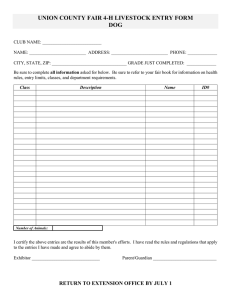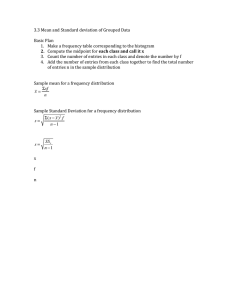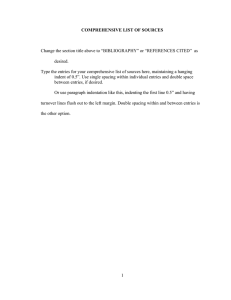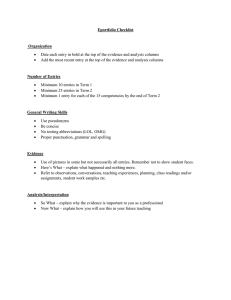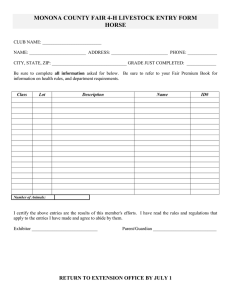Journal Entries
advertisement
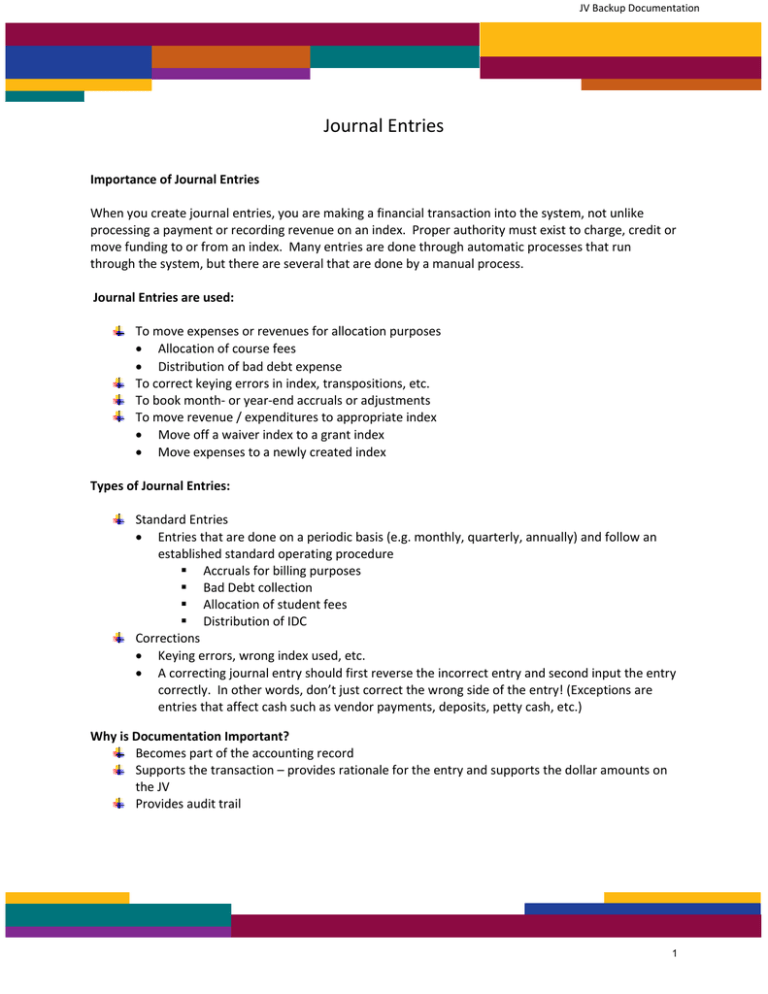
JV Backup Documentation Journal Entries Importance of Journal Entries When you create journal entries, you are making a financial transaction into the system, not unlike processing a payment or recording revenue on an index. Proper authority must exist to charge, credit or move funding to or from an index. Many entries are done through automatic processes that run through the system, but there are several that are done by a manual process. Journal Entries are used: To move expenses or revenues for allocation purposes Allocation of course fees Distribution of bad debt expense To correct keying errors in index, transpositions, etc. To book month‐ or year‐end accruals or adjustments To move revenue / expenditures to appropriate index Move off a waiver index to a grant index Move expenses to a newly created index Types of Journal Entries: Standard Entries Entries that are done on a periodic basis (e.g. monthly, quarterly, annually) and follow an established standard operating procedure Accruals for billing purposes Bad Debt collection Allocation of student fees Distribution of IDC Corrections Keying errors, wrong index used, etc. A correcting journal entry should first reverse the incorrect entry and second input the entry correctly. In other words, don’t just correct the wrong side of the entry! (Exceptions are entries that affect cash such as vendor payments, deposits, petty cash, etc.) Why is Documentation Important? Becomes part of the accounting record Supports the transaction – provides rationale for the entry and supports the dollar amounts on the JV Provides audit trail 1 What is Proper Documentation? Complete Description: Journal entry must have a complete explanation of what the entry is attempting to accomplish. FOATEXT is the form used to record the complete description. The supporting documentation can be referenced if it includes the more complete description. If a standard entry, develop standard text that can be used each time the entry is prepared. This enables you to include a more clear description with little extra work. Provide information to explain why entry is being made, not just what is being done as appropriate. Sometimes providing rationale for the entry is appropriate. Use “Tsf” for “transfer” to indicate that the expense or revenue is being moved from a different index. Where possible, use reference numbers from the original entry being corrected or allocated. This helps tie back to the original document. Hints: Save the wording in a document on your desktop that you can cut and paste from Refer to Standard Operating Procedure (assuming it exists and can easily be found should an auditor ask) (e.g. – Final closeout on a grant billing) Supporting documentation: JV documentation should support the dollar amount(s) on the entry, provide authorization for the transfer of revenue or expense, and/or demonstrate the error being corrected. Documentation should be presented in a way that makes it “self‐explanatory” – remember, auditors may be pulling this several months or years later. Reviewer/ auditor should not have to decipher your thoughts! Documentation must be readable! Use clear scans. Documentation should be “official” to support the transaction; for example something from Banner or a copy of the actual final invoice for grants billings/ accruals, etc. Examples/ Hints: Attach a copy of an eprint report showing original entry that is being corrected – Attach a copy of a memo authorizing the movement of expenses or revenues Attach a spreadsheet showing the calculation for the reallocation If entry is to reverse a prior entry (example: accrual), attach copy of prior entry. Highlight or augment any attachments to show your line of reasoning, or where you are gathering information. Banner Print screens can be placed in a Word Document and then printed as a pdf. Be sure what you’re supplying is relevant. Look for concise ways of documenting, for example, rather than making four print screens by account code, use FGITBSR to capture them all. Try to get print screens with date, or date them manually. Upload document so that pages don’t have to be flipped by reader, if possible. Consider developing a report or query that provides this information monthly with just the information you need. 2
